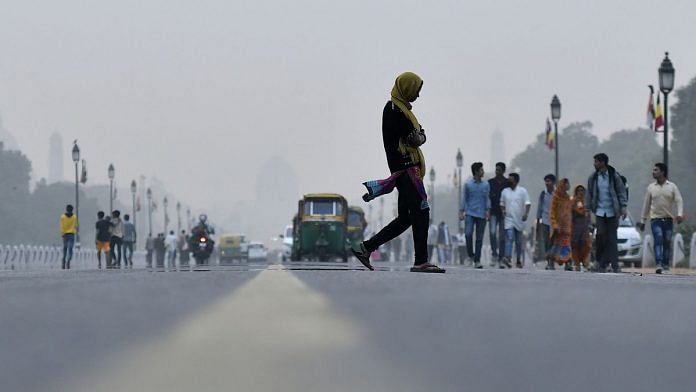From mandating CNG for Delhi’s buses to restricting the bursting of fireworks, courts have tried to curb air pollution in the capital for more than 20 years.
New Delhi: Year after year, especially during winter, the issue of air pollution in Delhi and other parts of the National Capital Region (NCR) becomes top of the mind conversation. The worrying levels of pollution have also seen several interventions by courts, including the Supreme Court of India.
While the impact of the judicial orders is still a matter of debate, very few are aware of the long list of judicial interventions.
ThePrint sifts through years of orders passed by the Supreme Court, the Delhi High Court and the National Green Tribunal to compile what the courts have said or ordered in the last two decades.
While the Supreme Court first took cognisance of rising air pollution in Delhi in 1986, while hearing a petition filed by environmentalist M.C. Mehta, court orders are available online from 1991 onwards.
Five of the judgments between 1991 and 2001 are available while records of proceedings (ROP) are available from 2001 onwards.
Here’s a ready reckoner of what the courts have ordered so far.
1996
Supreme Court
26 November: The apex court banned the operation of brick kilns — 246 in all — within city limits on account of the existing practice at the time. The court, in a bid to clamp down on air pollution, did give the affected brick kiln owners time till the end of January 1997, to shift to the new technology of manufacturing bricks by Flash-sand-lime technology.
December: In order to curb the rising pollution in the state, the top court ordered the closure of 168 industrial units outside Delhi.
1998
Supreme Court
28 July: The top court accepted the Bhure Lal Committee report fixing the time limit within which the entire fleet of buses in the national capital plying on diesel would switch-over to CNG.
22 September: To tackle problems arising out of chaotic traffic conditions and vehicular pollution, the apex court banned all commercial vehicles that were over 15 years old and passed directions that they shall not be permitted to ply in the NCT with effect from 2 October 1998.
2001
Supreme Court
6 December: The apex court directed all good vehicles not terminating in Delhi to be re-routed through alternative routes. The order was to come into effect from 15 January 2002.
2002
Supreme Court
5 April: Overriding protests by the Centre, the top court mandated the conversion of the entire fleet of diesel-powered buses to Compressed Natural Gas (CNG).
2014
Supreme Court
10 February: The apex court accepted a report submitted by Environment Pollution (Prevention & Control) Authority (EPCA) on the priority measures to reduce air pollution and protect public health in the Delhi and the NCR. It targeted air pollution as an issue to be heard exclusively as a separate matter.
28 November: The apex court accepted two notes submitted by senior advocate Harish N. Salve, the amicus curiae in this matter. The notes related to “advance emission standards for urgent action on air pollution in Delhi and other cities” and the “need for emergency response based on daily air quality index”.
After perusal of the notes, the apex court opined that both situations needed to be considered and implemented by the central government at the earliest.
Also read: 35% residents want to leave Delhi-NCR to escape air pollution, says survey
National Green Tribunal
26 & 28 November: The NGT, which was then chaired by Justice Swatanter Kumar, passed several directions. Pointing out that it was the constitutional and statutory duty of all the authorities and ministries to provide clean air, the NGT reiterated the ban on all commercial vehicles (diesel and petrol variants) that were over 15 years old.
It also banned burning of plastic or any other material in the open. Action would be initiated against the violators, it warned.
The Delhi government, the Delhi Pollution Control Committee (DPCC) and the Central Pollution Control Board (CPCB) were directed to constitute a web-based portal where people could complain about pollution issues.
Parking cars on tarred roads was banned. Parking directions in markets were put in place in order to avoid congestion.
The state government was ordered to take immediate steps to provide cycle tracks in Delhi. DTC buses were to undergo fitness tests, and those that emitted pollution in excess would not be permitted to ply. Overloaded trucks were not allowed entry in Delhi. The ministries were directed to explore the feasibility of installing air purifiers in markets, crowded places or areas where traffic load is heavier.
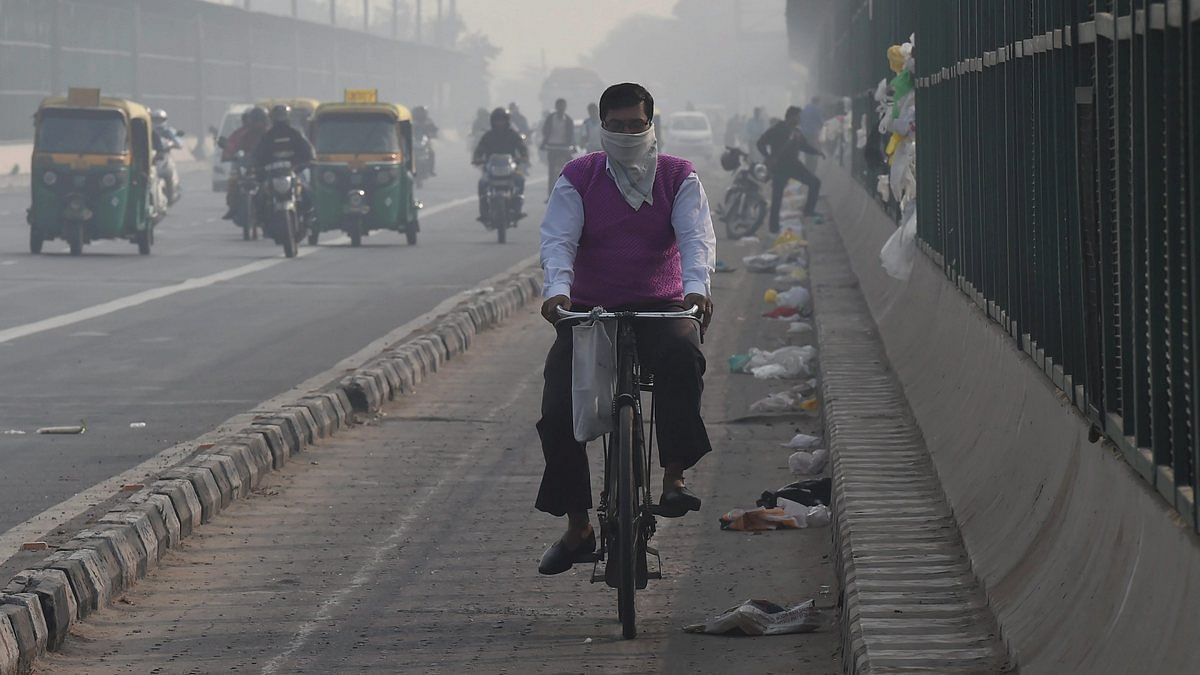
4 December: The NGT on 2 December had constituted a meeting that was attended by stakeholders from the state and central government. In pursuance to the meeting, where 34 people from various ministries and departments attended, the tribunal identified that dust, burning of plastic and other materials including leaves in the open area and vehicular pollution were the three primary sources of air pollution as far as PM 10 was concerned. The green tribunal then passed several directions – tackling each reason for air pollution separately, supplementing those passed a month ago in November.
2015
Supreme Court
9 October: Noting that about 23 per cent of the commercial vehicles and 40-60 per cent of the heavy trucks entering Delhi were not destined for the city, the apex court levied an additional “pollution compensatory charge” on these vehicles. The apex court also directed toll collectors to install Radio Frequency Identification (RFID) system at their own cost at nine main entry points in the city by 30 November 2015 and by 31 January, 2016 at all the remaining 118 entry points to the city, failing which the contractors would be treated as being in breach of their obligation.
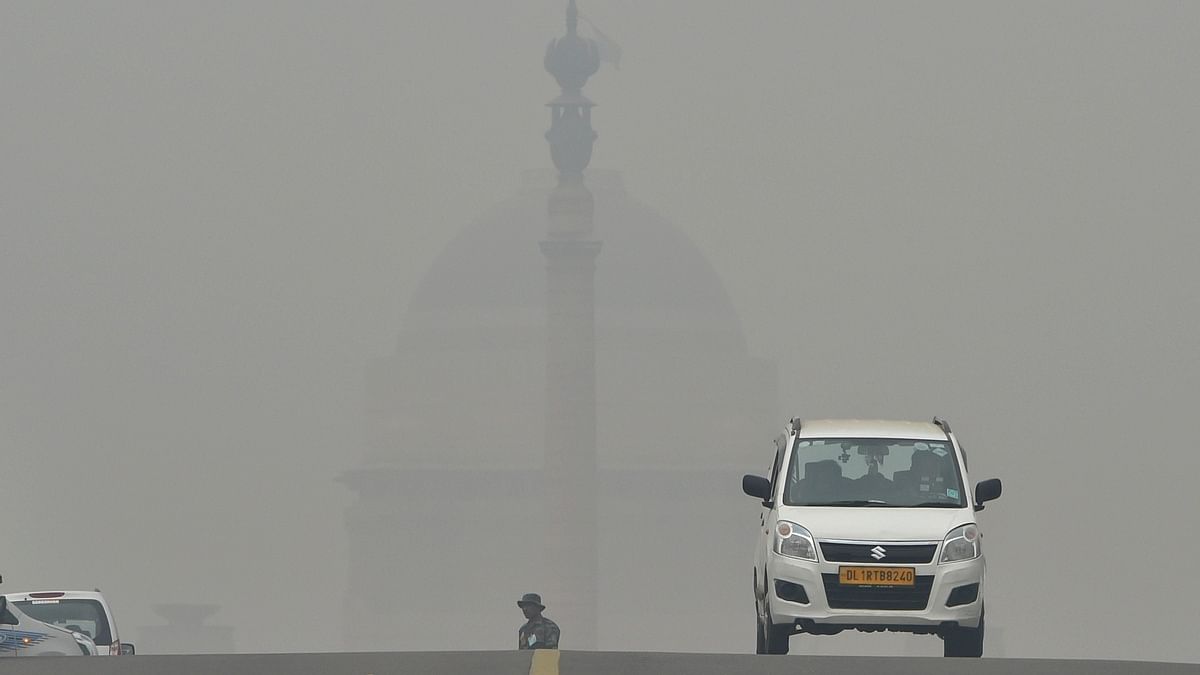
While hearing the matter, the then Chief Justice of India H. L. Dattu commented: “My grandson wears a mask. He looks like a ninja. When I asked him why he was wearing a mask, he said it was due to pollution.” Dattu’s admission came when Salve said: “My wife has asthma. My daughter has asthma and I had to take a steroid (for the) first time two days back. It is all because of pollution.”
16 December: Empty or un-laden vehicles bound for Delhi, could now enter the city on payment of Environment Compensation Charge (ECC), which the apex court had earlier set at Rs 700 and Rs 1,300 per vehicle depending on the category they belonged to. Delhi-bound vehicles loaded with goods, however, were to be charged twice the amount.
The Delhi government and other local bodies generating solid waste were ordered to take steps to ensure that no part of such waste was burnt and that proper arrangements were made for their disposal.
Delhi High Court
9 February: Taking note of media reports that termed Delhi as one of the most polluted cities in the world, the high court took suo motu cognisance of the matter and issued a notice to the relevant authorities.
24 April: The high court directed the central government to submit an action plan with regard to tackling air pollution in the national capital.
9 September: The high court directed the state government to come out with an action plan with regard to preserving the forest areas in the city. It also directed municipalities to ensure that all debris was cleared off the roads after completion of construction work.
27 November: A division bench issued orders to the traffic police to ensure there was “zero tolerance” of traffic violations in areas with high traffic congestion. This, the court said, “would not only aid in the reduction of air pollution but would also be a step towards the safety and security of the citizens of Delhi.”
3 December: After perusing all the affidavits, reports and minutes of the meetings held by various departments, the high court identified two major causes of pollution in Delhi — dust pollution caused by construction activities, both of buildings and roads, and the second being the pollution due to vehicular traffic.
The high court also directed all the municipal corporations in Delhi to publicise, through radio, television or print media that burning of leaves, garbage, plastic and rubber in the open is prohibited and that it causes air pollution.
The Delhi police were ordered to ensure all traffic police was given protective masks. The state government to come out with a policy with regard to the use of fireworks burst during weddings and other celebrations to minimise its use.
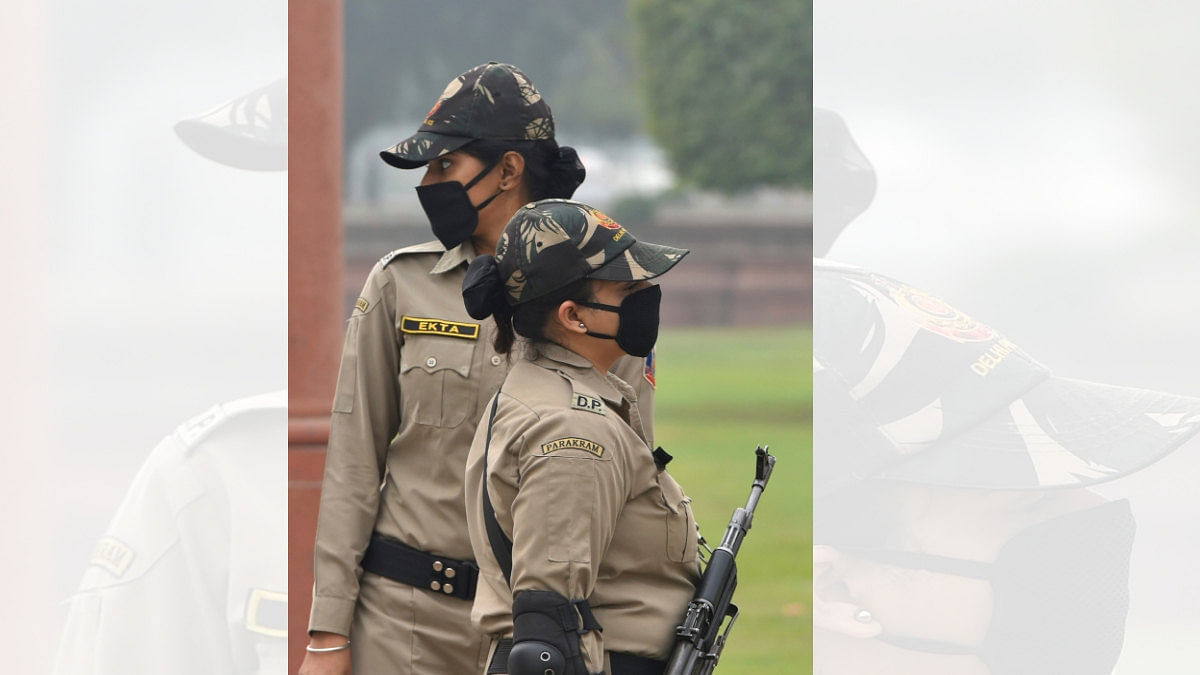
National Green Tribunal
10 April: Noting that construction activity was one of the serious contributors of air pollution, the NGT ordered that all plans submitted by builders would be sanctioned on the condition that MOEF guidelines would be strictly adhered to.
7 October: The green tribunal ordered all traffic not destined for Delhi to be re-routed through alternative routes.
10 December: The NGT banned crop burning in the neighbouring states of UP, Haryana, Rajasthan and Punjab. It directed the respective state governments to provide aid and machines to farmers for extracting agricultural crop residue and help them make use of the residue.
11 December: The NGT reiterated past orders and now directed the imposition of fines for those who violated them. Those who burnt plastic and garbage in the open or dumped garbage at unauthorised sites would be liable to a fine up to Rs 5,000 and builders who flouted norms would be fined Rs 50,000, it ruled.
2016
Supreme Court
11 November: Right after Diwali, the apex court ordered a complete ban on the sale of firecrackers in the national capital.
2 December: The apex court directed the Centre to examine the matter and issue an appropriate notification to incorporate the graded response action plan (GRAP). The GRAP is a reactive measure to the different levels of pollution in the air.
Delhi High Court
7 April: The court noted that one of the major contributors of air pollution in Delhi was vehicular traffic, particularly “idling emission at intersections” and “traffic jams”. Against this backdrop, the high court directed the Centre and the state governments to come out with a concrete plan for better traffic management.
19 May: To ease the pressure on landfill sites, the high court directed municipal bodies to ensure there were proper waste management protocols in place within six months.
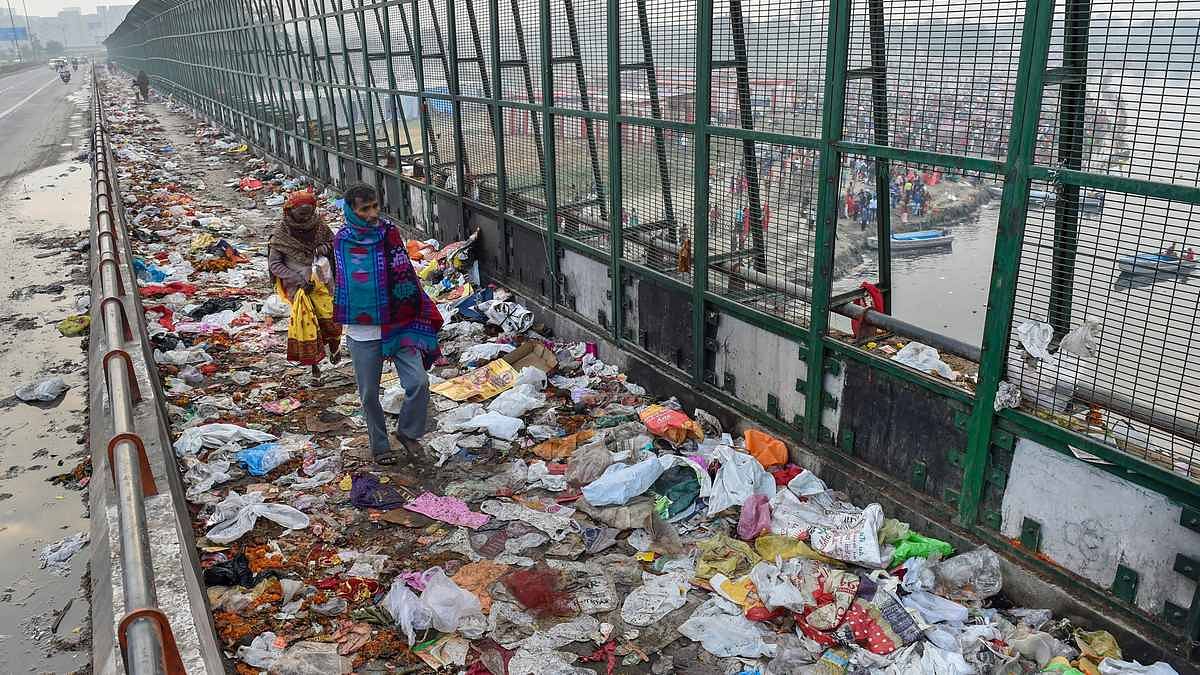
6 October: The high court made it clear that the chief secretaries of Punjab, Haryana, Rajasthan and Uttar Pradesh would be responsible if the NGT order banning crop burning was not followed.
18 November: The high court directed municipal bodies responsible for the landfill sites to ensure that all fires in these landfill sites are extinguished with immediate effect. It also reiterated an earlier order and directed authorities concerned to ensure that construction sites, whether they be of the public or of private builders, are kept debris free.
National Green Tribunal
18 & 20 July: The tribunal directed RTOs of NCR, Delhi, Haryana and Rajasthan to deregister all the diesel vehicles over 10 years of age in a phased manner. Older vehicles — more than 15 years — were to be de-registered first.
The tribunal, however, exempted DTC buses and fire-fighting vehicles running on diesel.
Diesel vehicles over 15 years old and just BS-I or BS-II compliant shall be scrapped and no NoC will be issued for transfer of the vehicles, it said.
10 November: The tribunal noted that if the values of the ambient air quality crossed 500 (PM10) or 300 (PM 2.5) respectively then it was a case of ‘environmental emergency’.
Once ‘environmental emergency’ was recognised, the NGT said, certain measures would be automatically activated. Among others, they include water being sprinkled across the city through helicopters, stone crusher units in worst affected areas being shut, and the temporary shutting down of power generation plants, brick kilns, hot mix plants that are found to be emitting in excess of prescribed standards.
Also read: Delhi’s air pollution is a water crisis in disguise
2017
Supreme Court
29 March: The apex court banned the sale and registration of vehicles that are not BS-IV compliant from 1 April 2017 onwards.
10 August: The top court ruled that motorists would be unable to renew their car insurance without a valid pollution under control (PUC) certificate.
12 September: The top court modified its earlier order and lifted the complete ban on fireworks temporarily. “The suspension of permanent licences as directed by the order dated 11th November 2016 is lifted for the time being. This might require a review after Diwali depending on the ambient air quality post-Diwali,” the apex court had then said.
Delhi High Court
22 September: In order to prevent and minimise burning of agriculture waste, the high court ordered all states to implement the respective notifications and directions issued by them under the Air Pollution Act banning the burning of crop residue/paddy straw strictly.
The states were also directed to issue orders to companies and production plants, including public sector undertakings involved in the manufacturing of boards and rough paper, to discharge their corporate social responsibility by collecting the crop residue from the fields of farmers by providing them with money as consideration for lifting the agricultural residue.
14 November: The high court entertained the feasibility of scrapping the annual Airtel Delhi Half Marathon on account of the poor air quality. The court, however, dismissed the idea two days later when the event organisers submitted that the route covered by the runners would be as pollution free as possible.
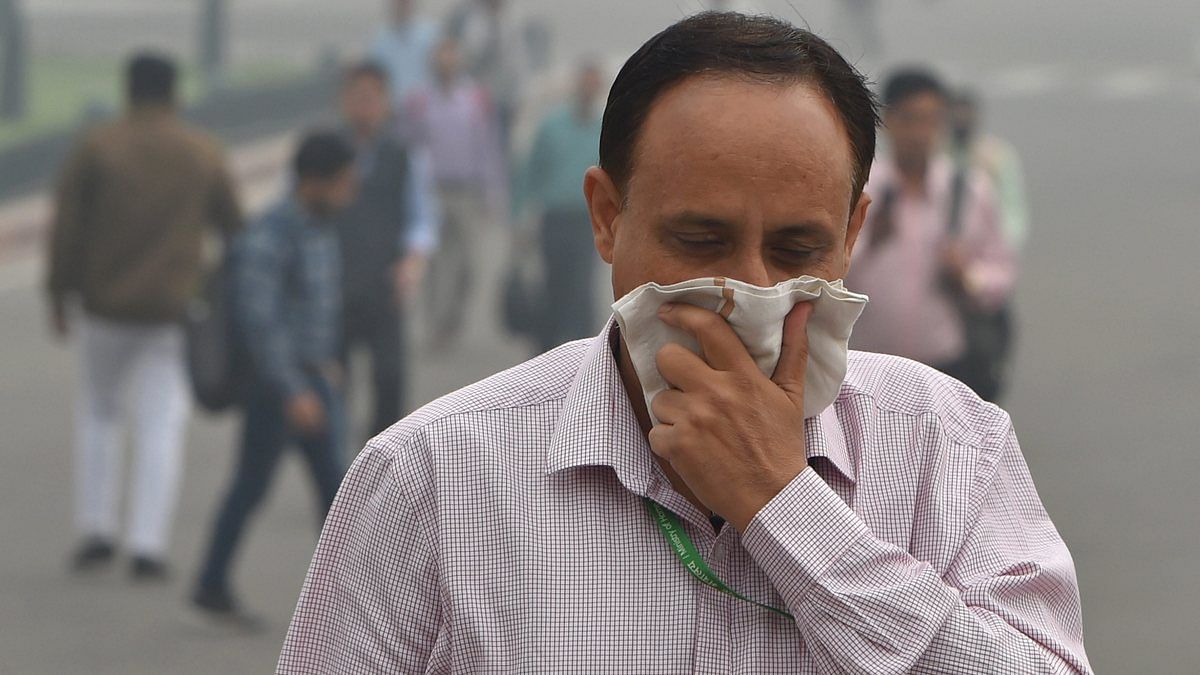
National Green Tribunal
9 November: In a bid to curb air pollution, the tribunal reiterated several directions such as temporarily stopping all construction and industrial activity that releases emissions and called for a special task force to be deployed in order to ensure all precautionary measures were being complied with.
2018
Supreme Court
23 October: Apex court imposes heavy restrictions on the bursting of firecrackers during Diwali in the region: Only “green” firecrackers can be burst; they should be burst in designated areas in community events, and they should be burst on festival days between 8 pm and 10 pm.
24 October: Motor vehicles not conforming to the emission standard Bharat Stage IV shall not be sold or registered in the entire country with effect from 1 April, 2020, the apex court said.


